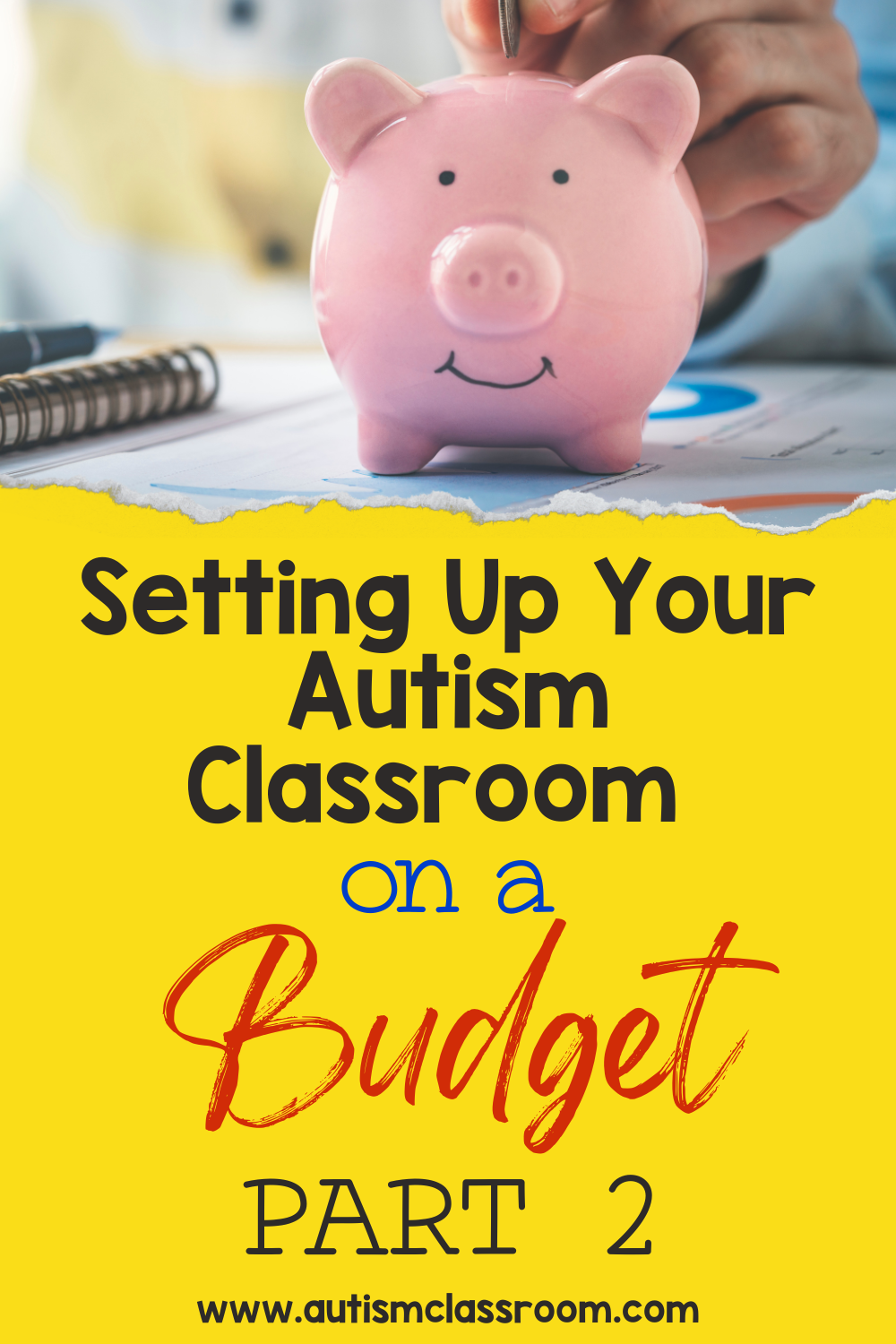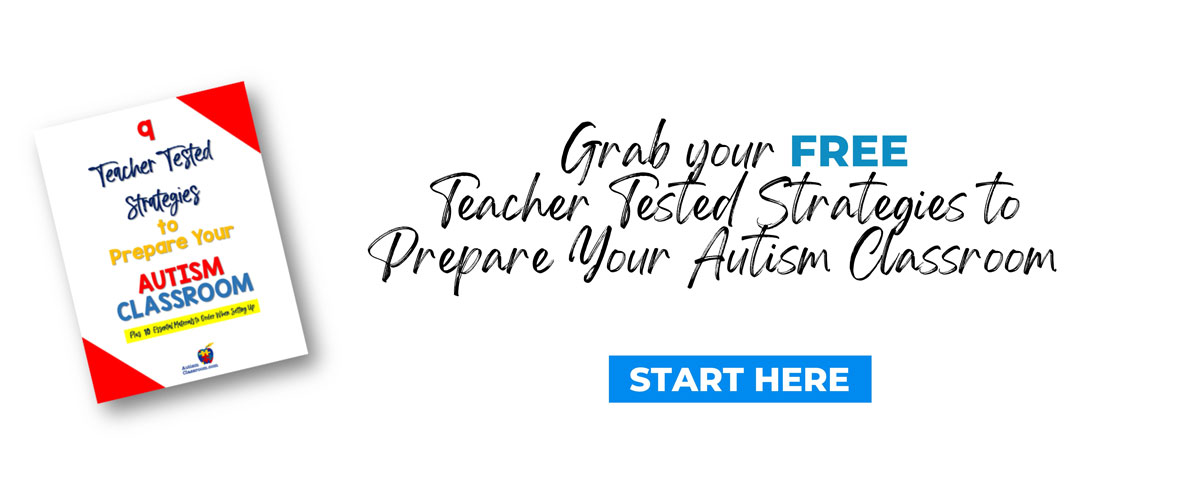Inside: Ideas for saving when making communuication, play & leisure supports.

Communication
When setting up your autism classroom, keep in mind that communication will be a focal point and common challenge among your students. One goal in an autism classroom is always to increase the student's ability to express and receive a message. However, communication boards, devices, and visuals can be expensive and time consuming to create. But fear not, there are a few ways to do this without spending a lot of money.
- To start with, you can print picture icons in black and white, instead of color, to save on ink.
- Next, you can use an internet search to find images for communication tools. Just be sure that it is a clear picture of just the item and it does not have anything in the background.
- Take inventory of what is already in the classroom. See what you can use or re-purpose.
- Another option is to take your own photo of the item you need a visual of.
- Additionally, teachers can save loads of money by using the real object as a communication tool or by using a cut out of the actual package of the product. The cut out can be laminated or placed in a zippered baggie and exchanged back and forth for students who may be non-verbal or who may use limited speech.
To increase communication with students with limited speech, you can use pocket photo albums as communication books. They are found at most dollar stores, they are lightweight, and they can have picture cards inserted and removed easily. Schedules, which are needed in many autism classrooms, can be made using card stock paper or file folders. I have even seen someone make a pocket folder with sheets of construction paper! Finally, communication costs can be lowered by the teacher bringing in real items from home when teaching concepts in a specific lesson or asking families to send in favorite items. This has an added benefit of providing a hands-on experience for the students.
Communication is such a large part of teaching in an autism classroom, I have created multiple communication building products in my TpT Store. You can see them here. I have also heard back from numerous teachers who said that making the communication supports and visual supports take up a lot of time, so I created a book with visual supports (first-then boards, token boards, etc.) that you can simply cut out!!! The paperback book of visual supports will be available in late June.
Play & Leisure
Play time and leisure time products can be costly, but here are some tips for easing the burden on the wallet. Some thoughts:
- Classroom teams can shop thrift stores and yard sales for “fidget” toys and age appropriate toys. The small wind-up toys, usually found in kids meals at various fast food restaurants, make great reinforcers and motivators for children (be sure to monitor their use closely if any students are prone to place things in their mouth.)
- At yard sales, sometimes someone may be willing to let go of a huge bag of these items for as little as $5.00.
- Swapping toys on a rotating basis with another classroom teacher in the building can help save some money as well.
- Additionally, board games, turn taking games, or matching games can often be found at thrift stores in decent condition for very cheap.
- You can also get extra creative and use your thrift finds to create your own game using two identical decks of cards from the dollar store (shapes cards, letter cards, number cards, etc.)
- This theory works the same for paint “chips” from the hardware store or identical photographs, both of which can make simple matching games.
File folder games are easy to store and easy to create. Simply take one set of matching game cards, glue it to a file folder, laminate and you have a sturdy teaching material.
Sensory toys are getting easier to come by these days, but still at a price. This curated list I created will help you identify sensory items as well as almost everything else you need to consider ordering. But you can also reach out to others for sensory items. To assist with purchasing items for a sensory area in the classroom, teachers can ask family, friends, student’s parents or community supporters to send in items for a sensory area (ex. lotion, shaving cream, finger paint, weighted blankets.) If that is not possible, making sensory items may be the best solution. For example, a “weighted sock” can be created using tube socks (doubled up) and dry rice. Also, a teacher can try using three or four pillows inside of a sewn sheet as a sensory body pillow. If tactile sensory items are needed, creating a “squishy” toy using finger paint inside of a zippered baggie may just work. Just be sure to secure it with several baggies, duct tape and adult supervision!
I hope this two part series has given you a few ideas for your autism classroom. My page about this site will give you some details about what more is offered for teachers looking to set up an autism classroom. And, if you join the AutismClassroom.com community newsletter/email list, you will receive information-packed emails and 9 Teacher Tested Strategies to Prepare Your Autism Classroom (see below) that help to provide you with strategies to help your students have more successful days.


